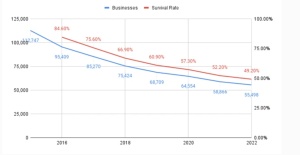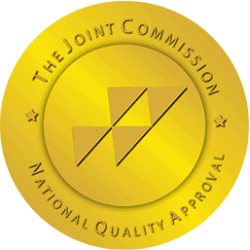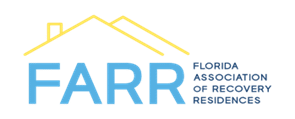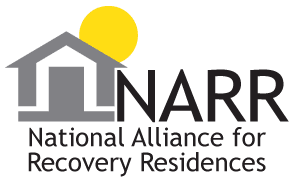Government Shutdown and Its Implications on Behavioral Health Treatment and Accessibility
When a government shutdown happens, it’s more than a political standoff—it’s a disruption that ripples through nearly every aspect of American life. News coverage often focuses on national parks closing or federal employees missing paychecks, but beneath the surface lies a deeper and quieter crisis. For millions of Americans who rely on public funding or federally supported programs for mental health and addiction treatment, a government shut down can mean delays in care, interrupted services, and growing anxiety in already vulnerable populations.
This blog explores how a government shutdown affects behavioral health services, from funding interruptions to workforce strain, and what these disruptions mean for the individuals, families, and communities that depend on consistent mental health and substance use treatment.
What a Government Shutdown Really Means
A government shut down occurs when Congress fails to pass a budget or a continuing resolution to fund federal agencies. When that happens, “non-essential” government operations are suspended, and hundreds of thousands of federal workers are either furloughed or required to work without pay. Essential services—like air traffic control or emergency medical response—continue to operate, but many others, including key behavioral health programs, are slowed or paused.
Agencies like the Substance Abuse and Mental Health Services Administration (SAMHSA) and the National Institutes of Health (NIH), which fund and oversee much of the country’s mental health and addiction research and programming, may be forced to delay grant disbursements, pause program reviews, and suspend community outreach. Even short-term interruptions can cause weeks or months of downstream delays in the behavioral health system.
Disruptions in Funding and Treatment Continuity
Behavioral health care in the United States is a complex patchwork of public and private funding. Many community clinics and treatment centers depend on federal grants or contracts to operate. During a government shutdown, these funding streams freeze. Grant renewals and payments are postponed, new funding applications are delayed, and some programs are left uncertain about whether their staff will be paid.
This has real consequences for accessibility. For instance, a treatment center that relies on SAMHSA block grants might need to suspend outreach to new clients, postpone group sessions, or even temporarily lay off employees. Medicaid payments generally continue, but administrative processes—such as eligibility reviews, audits, and approvals—can be delayed, creating uncertainty for providers and patients alike.
For people already in treatment, continuity of care is crucial. Behavioral health recovery relies on stability, trust, and structure. When the system supporting that stability falters, relapse, crisis, and disengagement from care can follow. Even the perception that treatment access might become limited can cause stress, which may worsen symptoms of depression, anxiety, or substance use disorders.
The Impact on Vulnerable Populations

Veterans and Military Families
The Department of Veterans Affairs (VA) typically continues to provide medical care during a government shut down, but administrative delays can still occur. New benefit claims might not be processed, and outreach or mental health awareness programs could be put on hold. Veterans dealing with PTSD, depression, or substance use issues often depend on consistent access to care and peer-support programs. Interruptions, even minor ones, can lead to isolation, symptom flare-ups, or loss of progress in therapy.
Low-Income and Rural Communities
Many rural or low-income areas depend heavily on federally funded community mental health centers. When a government shutdown halts grant payments or restricts operational budgets, these facilities may have to cut back hours or limit services. For someone in a small town, the nearest alternative clinic could be dozens of miles away. Without reliable transportation or insurance, that distance becomes an insurmountable barrier.
Children and Families
Programs like Head Start, which support early childhood development and family mental health, are often among the first to feel the impact. When these programs pause operations due to a government shutdown, parents may lose access to counseling and children may lose vital behavioral supports at a critical stage of development.
A System Already Under Strain
Behavioral health care in America has been stretched thin for decades. The COVID-19 pandemic deepened the crisis, creating record demand for therapy, psychiatric care, and addiction treatment. Workforce shortages and rising burnout among mental health professionals have further strained the system.
A government shutdown doesn’t cause these problems, but it compounds them. Providers who already operate at capacity face more administrative uncertainty and potential funding gaps. Research programs studying the effectiveness of new treatments can be paused. Data collection on mental health outcomes may be delayed, reducing the ability to plan effective interventions.
When these pressures converge, communities lose momentum in addressing the ongoing mental health and addiction epidemic. Each pause, each delay, each funding freeze represents lost time—time that people in crisis cannot afford.
Mental Health and the Stress of Uncertainty
Even for individuals not directly dependent on government services, a government shutdown can affect mental health indirectly. The national conversation surrounding shutdowns often stirs fear, frustration, and cynicism. Federal employees face the anxiety of missed paychecks, unsure how long they’ll need to stretch their savings. Contractors and small business owners who depend on federal projects face similar uncertainty.
Economic insecurity is one of the most powerful stressors linked to anxiety, depression, and substance misuse. When paychecks stop and bills pile up, emotional distress grows. For some, the strain triggers or worsens existing mental health symptoms. For others, it may push them toward maladaptive coping strategies, including alcohol or drug use.
Behavioral health providers report that during prolonged shutdowns, crisis calls and emergency visits for anxiety and depression often increase. The psychological toll extends far beyond those who work directly for the federal government—it touches families, neighbors, and entire communities that depend on economic stability.
Federal Employees and Access to Care
During a government shutdown, furloughed federal employees might face barriers to accessing mental health care even if they have insurance. Some providers require payment upfront for copays or prescriptions, and when paychecks stop, affordability becomes a real issue. Employees covered through the Federal Employees Health Benefits (FEHB) Program still technically have insurance, but if premiums aren’t being deducted from paychecks, complications can arise in maintaining active coverage.
This creates a dangerous paradox: at the very moment when financial stress and uncertainty heighten emotional distress, access to care becomes more difficult. Some employees report postponing therapy sessions or skipping medication refills during shutdowns to conserve money. For individuals managing depression, anxiety, or PTSD, these gaps in treatment can be destabilizing.
Delays in Research and Innovation During a Government Shutdown
The government shutdown also slows the pace of scientific discovery. Institutions like the National Institutes of Health and the National Institute on Drug Abuse (NIDA) play key roles in funding and guiding behavioral health research. During a shutdown, peer review panels are canceled, grant approvals are postponed, and researchers may lose access to federal databases or lab facilities.
This not only affects scientists but also the patients who rely on cutting-edge treatments emerging from federally funded studies. Clinical trials may be delayed, meaning new medications or therapies for depression, PTSD, or addiction remain out of reach for longer.
When government research agencies go dark, innovation in mental health care stalls—and that slows national progress in tackling crises like the opioid epidemic or rising suicide rates.
Disruption to Public Awareness and Prevention Campaigns During a Government Shutdown
A government shutdown doesn’t just affect direct services; it also interrupts communication. Public health campaigns about suicide prevention, substance use awareness, and mental health stigma rely on federal coordination and digital outreach. When websites go offline or staff are furloughed, these efforts go silent.
For example, during past shutdowns, federal social media accounts for SAMHSA and the National Suicide Prevention Lifeline stopped posting updates. While crisis hotlines continued operating thanks to nonprofit partners, the loss of federal messaging left a gap in public education and engagement.
These communication pauses matter. Behavioral health awareness campaigns save lives by connecting people to resources before a crisis occurs. When they go quiet, the public loses a vital link to information and hope.
The Ripple Effect on State and Local Programs

Many state and local behavioral health programs rely on matching or pass-through federal funds. When a government shutdown freezes that funding, the impact cascades down to counties and municipalities.
State agencies might delay grant disbursements to local nonprofits, which in turn may postpone hiring staff or opening new treatment beds. This ripple effect is especially harmful for time-sensitive projects, like expanding detox capacity or launching prevention programs in schools.
Even after the shutdown ends, catching up on administrative backlogs can take months. Providers must re-submit invoices, re-file paperwork, and navigate layers of bureaucracy to restart normal operations. The system’s recovery is slow, even if the shutdown itself is short.
The Emotional Cost for Providers
Behavioral health professionals are dedicated to helping others manage stress, anxiety, and uncertainty—but they are not immune to those same pressures. During a government shutdown, clinicians in federally funded programs may face furloughs or pay delays, creating personal financial stress. Others continue working without pay, driven by a commitment to their clients but exhausted by the strain.
Therapists, social workers, and addiction counselors often form the emotional backbone of the recovery community. When they are under stress, their ability to provide consistent, compassionate care diminishes. The result is a collective burnout that further weakens the behavioral health infrastructure.
What Happens After the Government Shutdown Ends
When a government shutdown finally ends, the public often assumes everything snaps back to normal. But behavioral health systems rarely rebound overnight. Administrative catch-up takes time. Clients who fell out of care may need re-engagement. Research programs must reschedule panels and re-establish timelines.
Moreover, the psychological residue of uncertainty lingers. Providers may remain cautious about hiring or expanding programs, fearing future disruptions. Patients may worry that their care isn’t secure. For communities already struggling with rising rates of depression, anxiety, and addiction, this instability reinforces a cycle of fragility and mistrust.
The Bigger Picture: Why Behavioral Health Should Be Protected During a Government Shutdown
Every government shutdown highlights a painful truth: behavioral health is often treated as a secondary priority. When funding stops, it’s among the first areas to feel the pinch. Yet the nation’s mental health and addiction crises are among its most urgent challenges.
Protecting behavioral health programs from political gridlock is not just an act of compassion—it’s an economic and moral necessity. Mental illness and substance use disorders cost the U.S. hundreds of billions of dollars annually in lost productivity, medical expenses, and social consequences. Interrupting care only deepens those losses.
Long-term solutions could include classifying certain behavioral health programs as essential, ensuring funding continuity even during shutdowns. This would safeguard treatment centers, research programs, and awareness campaigns that millions depend on.
Moving Forward: Resilience and Reform
The behavioral health community is resilient. Nonprofit organizations, state agencies, and local providers often step up when the federal government shuts down, finding creative ways to maintain services through temporary funding or volunteer support.
Still, resilience is not a substitute for stability. True reform means creating a system that can withstand political turbulence without putting vulnerable lives at risk. It requires bipartisan recognition that mental health and addiction care are foundational to the nation’s well-being.
Every government shutdown offers a reminder of what’s at stake: not just paychecks or politics, but the emotional stability, safety, and survival of millions of Americans.
Conclusion
A government shut down is not just a bureaucratic event—it’s a public health emergency in slow motion. It disrupts funding, limits access to care, halts research, and undermines trust in systems meant to support those in need. Its effects ripple across families, communities, and entire states, deepening the mental health and addiction crises already gripping the nation.
As debates over budgets and priorities continue in Washington, one truth should be undeniable: mental health and addiction treatment must never be negotiable. Behavioral health is essential health, and every interruption in care represents a life potentially pushed further toward crisis. Protecting that continuity should be a national priority, no matter the political climate.
Ambrosia Behavioral Health stands at the cutting edge of mental health and addiction treatment. Since 2007 Ambrosia has been the nation’s leader in adult and adolescent behavioral healthcare maintaining a strong focus on neuroscience and research fueling their advanced treatment methods. If you or someone you know is struggling reach out today and we will provide you with exemplary customer service and a truly effective treatment experience.
How does a government shutdown affect behavioral health treatment in the United States?
A government shutdown directly affects behavioral health treatment by interrupting federal funding streams that support mental health and addiction services. Agencies like SAMHSA and the NIH may pause grants, delay program renewals, or suspend research activities. This can lead to staff furloughs, reduced clinic hours, and delays in patient care. For individuals relying on publicly funded programs or Medicaid-supported treatment, even short shutdowns can create long-lasting barriers to access and recovery.
Are federally funded mental health and addiction programs still available during a government shut down?
During a government shutdown, some federally funded mental health and addiction programs may continue operating, but many experience disruptions. Essential crisis services—like the Suicide and Crisis Lifeline—remain active, often through nonprofit or contracted partnerships. However, prevention initiatives, outreach programs, and grant-based treatment centers can experience delays in payments or temporary closures. Patients may face uncertainty about ongoing therapy, medications, or access to community support services.
How does a government shutdown impact access to behavioral health care for veterans and low-income families?
A government shutdown can significantly reduce accessibility for veterans and low-income families who depend on federally supported care. Veterans Health Administration clinics generally stay open, but new claims, benefits processing, and mental health outreach can be delayed. For low-income families, federally funded community behavioral health centers may suspend programs or reduce hours due to funding freezes. These interruptions can limit access to essential counseling, addiction recovery programs, and family support services.
Can a government shutdown cause mental health problems even for people not in treatment?
Yes. A government shutdown can increase nationwide stress, anxiety, and uncertainty. Federal workers facing furloughs, missed paychecks, and economic insecurity are at higher risk for depression and anxiety symptoms. The broader public can also experience heightened worry about economic stability and the availability of government services. Research shows that prolonged financial uncertainty can worsen mental health outcomes and increase the likelihood of substance use as a coping mechanism.
What long-term solutions could prevent behavioral health disruptions during future government shutdowns?
One long-term solution is to classify certain behavioral health treatment programs as “essential services” so that funding continues even during a government shutdown. Legislators could also create automatic funding protections for SAMHSA block grants, community health centers, and crisis response programs. Strengthening state-level contingency funding would also help ensure that vulnerable populations—especially veterans, low-income families, and people in addiction recovery—retain access to consistent care no matter how long a shutdown lasts.






